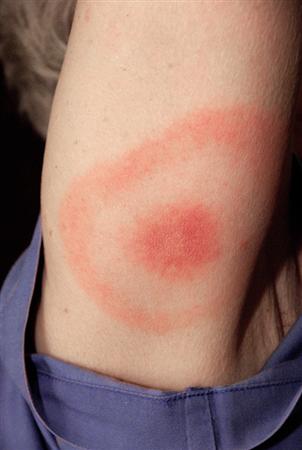Understanding the Mission of the Lymecare Alliance for Lyme Advocacy
Understanding Lyme Condition-- Vital Understanding for Prevention
Lyme condition continues to be a substantial public wellness concern, mostly sent through the attacks of infected ticks, particularly in regions with dense greenery. The early identification of Lyme illness is vital, yet lots of people stay uninformed of its symptoms or the atmospheres that present the greatest danger.
What Is Lyme Illness?
If left without treatment, Lyme condition can proceed to extra extreme phases, potentially affecting the joints, heart, and nerves. Patients might experience arthritis, neurological problems, or cardiac conditions. The illness can be testing to identify, as its symptoms can mimic those of various other health problems. Diagnostic methods generally involve a mix of scientific evaluation and laboratory screening, consisting of serological assays to discover antibodies against Borrelia burgdorferi.
Timely acknowledgment and therapy are essential in taking care of Lyme illness and avoiding difficulties, with very early antibiotic intervention normally resulting in desirable results.
How Lyme Condition Spreads
Lyme disease largely spreads via the bite of infected black-legged ticks, additionally called deer ticks, which lug the germs Borrelia burgdorferi. These ticks are commonly discovered in wooded or grassy locations, frequently residing on hedges or reduced vegetation. They call for a blood meal from a host, such as pets or humans, to prosper and reproduce.
Transmission usually takes place when ticks connect to the skin and continue to be for a prolonged duration, generally 24 to 48 hours. The danger of infection enhances with the period of attachment, as the germs is sent from the tick's saliva into the host's bloodstream. Ticks can be energetic throughout warmer months, particularly in springtime and summer, making outside activities a prospective threat for direct exposure.
While black-legged ticks are the main vectors, various other species, such as the Western black-legged tick, can likewise transfer Lyme condition. It is vital to be cautious in locations where ticks are prevalent. Preventative procedures consist of putting on safety clothes, making use of tick repellents, and conducting detailed tick checks after outdoor tasks to reduce the likelihood of bites and subsequent transmission of Lyme disease.
Symptoms and Medical Diagnosis
Identifying the signs of Lyme condition is essential for timely diagnosis and treatment, as early intervention can significantly affect recovery. One of the most identifiable early signs and symptom is the erythema migrans rash, which looks like a round, red sore with a main clearing, typically appearing like a "bull's- eye." This breakout generally establishes within 3 to 30 days after a tick bite and might be come with by flu-like signs and symptoms such as fever, chills, fatigue, muscular tissue pains, and frustrations.

Diagnosis of Lyme condition primarily relies on scientific analysis, thinking about the client's symptoms and potential direct exposure to ticks in native locations. Laboratory tests, including enzyme-linked immunosorbent assays (ELISA) followed by Western blot tests, can support the diagnosis but are not definitive Homepage in early-stage Lyme disease. Prompt recognition and diagnosis are important for starting suitable antibiotic therapy, which is most efficient when administered early in the condition course.
Avoidance Strategies
Avoiding Lyme illness needs an aggressive strategy, particularly for people who spend time in areas where ticks prevail. The first line of protection involves using appropriate clothes, such as lengthy pants and long sleeves, ideally made from securely woven fabrics - Lymecare Alliance. Light-colored apparel can assist in finding ticks more conveniently. Furthermore, tucking trousers into socks and using tick-repellent items consisting of DEET or permethrin can considerably reduce the threat of tick attachment.
On a regular basis examining oneself, youngsters, and animals for ticks after exterior activities is critical. Ticks ought to be promptly eliminated making use of fine-tipped tweezers, understanding them as near the skin's useful source surface as feasible. It is advisable to shower within 2 hours of returning indoors, as this can assist eliminate ticks before they affix.

Treatment Choices
Reliable monitoring of Lyme condition pivots on ideal and prompt therapy alternatives, which largely entail antibiotic treatment. Early localized Lyme condition is typically treated with dental antibiotics such as doxycycline, amoxicillin, or cefuroxime axetil for a duration of 10 to 21 days.
In cases of early shared Lyme disease, where neurological or heart signs may occur, a longer course of dental anti-biotics or intravenous anti-biotics might be required. For individuals experiencing persistent signs after first treatment, called Post-Treatment Lyme Condition Syndrome (PTLDS), a more complicated management approach might be called for. This can entail a multidisciplinary method, attending to not just the physical symptoms yet additionally psychological elements, as tiredness and cognitive troubles are usual.
It is necessary for clients to take part in open interaction with their healthcare service providers to customize therapy strategies to their details demands, ensuring the most effective possible outcomes in the management of Lyme disease.
Verdict
Lyme illness postures significant health and wellness dangers largely due to its transmission via infected black-legged ticks. Continued understanding and education and learning concerning Lyme condition are essential in reducing its effect, consequently advertising much healthier areas and safeguarding public health against this pervasive tick-borne disease.
Lyme illness largely spreads via the bite of infected black-legged ticks, additionally recognized as deer ticks, which lug the microorganism Borrelia burgdorferi. Lymecare Alliance.While black-legged ticks are the key vectors, various other varieties, such as the Western black-legged tick, can additionally send Lyme condition. Preventative actions consist of using safety garments, utilizing tick repellents, and carrying out complete tick checks after exterior tasks to minimize the probability of bites and subsequent transmission of Lyme disease
Medical diagnosis of Lyme condition largely depends on scientific examination, taking into account the client's symptoms and possible direct exposure to ticks in native areas.Lyme disease postures substantial health and wellness threats mostly due to its transmission by means of infected black-legged ticks.